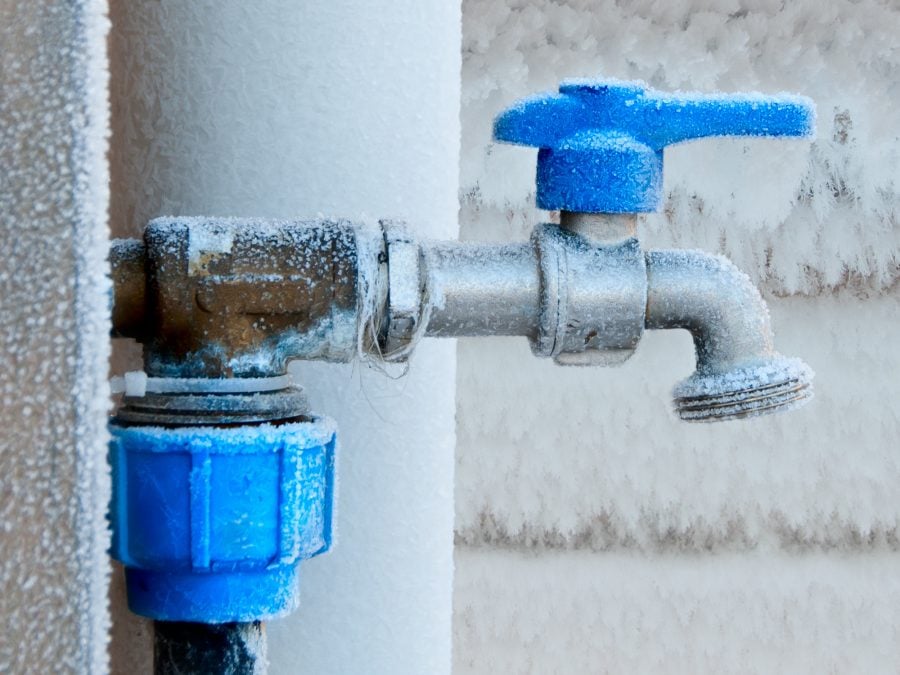How to Protect Pipes from Freezing Issues: Crucial Tips
How to Protect Pipes from Freezing Issues: Crucial Tips
Blog Article
Here below you can find more extremely good expertise pertaining to How To Avoid Freezing Pipes.

Cold weather can ruin your plumbing, specifically by freezing pipelines. Here's how to avoid it from happening and what to do if it does.
Introduction
As temperatures drop, the threat of icy pipes boosts, possibly causing expensive repair services and water damage. Comprehending exactly how to stop frozen pipelines is vital for property owners in cold environments.
Understanding Icy Pipelines
What creates pipelines to ice up?
Pipelines ice up when subjected to temperature levels listed below 32 ° F (0 ° C) for expanded durations. As water inside the pipelines freezes, it expands, taxing the pipeline walls and possibly causing them to break.
Risks and problems
Frozen pipelines can lead to water supply disruptions, home damages, and pricey repair services. Ruptured pipelines can flood homes and create extensive structural damage.
Indications of Frozen Piping
Recognizing frozen pipelines early can stop them from breaking.
Exactly how to identify icy pipelines
Seek decreased water circulation from faucets, unusual smells or noises from pipes, and visible frost on subjected pipelines.
Avoidance Tips
Protecting at risk pipes
Wrap pipelines in insulation sleeves or make use of heat tape to secure them from freezing temperature levels. Concentrate on pipelines in unheated or outside locations of the home.
Heating techniques
Keep interior areas effectively heated up, especially locations with plumbing. Open up cupboard doors to allow cozy air to distribute around pipelines under sinks.
Protecting Outside Plumbing
Garden pipes and outdoor faucets
Detach and drain pipes yard pipes before winter. Mount frost-proof spigots or cover exterior faucets with shielded caps.
What to Do If Your Pipes Freeze
Immediate actions to take
If you presume frozen pipelines, keep taps available to soothe stress as the ice melts. Make use of a hairdryer or towels soaked in hot water to thaw pipes gradually.
Long-Term Solutions
Structural adjustments
Take into consideration rerouting pipes far from exterior walls or unheated locations. Include additional insulation to attics, basements, and crawl spaces.
Updating insulation
Purchase high-quality insulation for pipelines, attic rooms, and walls. Correct insulation assists preserve regular temperature levels and reduces the risk of frozen pipelines.
Conclusion
Avoiding frozen pipes calls for aggressive actions and fast actions. By comprehending the causes, signs, and preventive measures, home owners can secure their plumbing throughout winter.
6 Proven Ways to Prevent Frozen Pipes and Protect Your Home
Disconnect and Drain Garden Hoses
Before winter arrives, start by disconnecting your garden hoses and draining any remaining water. Close the shut-off valves that supply outdoor hose bibs and leave the outdoor faucet open to allow any residual water to drain. For extra protection, consider using faucet covers throughout the colder months. It’s also important to drain water from any sprinkler supply lines following the manufacturer’s directions.
Insulate Exposed Pipes
Insulating your pipes is an effective way to prevent freezing. Pipe insulation is readily available at home improvement stores and is relatively inexpensive. Pay close attention to pipes in unheated areas such as the attic, basement, crawl spaces, or garage. Apply foam insulation generously to create a buffer against the cold. You can also wrap your pipes in heat tape or thermostat-controlled heat cables for added warmth.
Seal Air Leaks
Inspect your home for any cracks or openings that could let in cold air. Seal any holes around the piping in interior or exterior walls, as well as the sill plates where your home rests on its foundation. Additionally, make sure to keep your garage door closed unless you’re entering or exiting. Leaving it open creates a significant air leak that can lead to frozen pipes.
Allow Warm Air Circulation
During cold snaps, it’s essential to allow warm air to circulate evenly throughout your home. Leave interior doors ajar to promote better airflow. Open kitchen and bathroom cabinets to help distribute heat consistently around the rooms. If you have small children or pets, be sure to remove any household chemicals or potentially harmful cleaners from open cabinets for safety.
Let Faucets Drip
A small trickle of water can make a big difference in preventing ice formation inside your pipes. When temperatures drop significantly, start a drip of water from all faucets served by exposed pipes. This continuous flow helps prevent the water from freezing. Additionally, running a few faucets slightly can relieve pressure inside the pipes, reducing the chances of a rupture if the water inside does freeze.
https://choateshvac.com/6-proven-ways-to-prevent-frozen-pipes-and-protect-your-home/

We had been made aware of that report on 6 Ways to Prevent Frozen Pipes from a friend on another site. Are you aware of another person who is in to the topic? Be sure share it. Many thanks for your time. Don't hesitate to come visit our website back soon.
Click Report this page